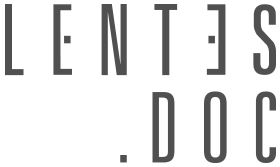Monthly Survey of Industry
Industry changes -0.4% in September and shows pace of decline
November 04, 2025 09h00 AM | Last Updated: November 04, 2025 04h24 PM

The industrial sector changed by -0.4% in September compared to August, offsetting part of the 0.7% increase recorded in August. With this result, industrial production is 2.3% above the pre-pandemic level (February 2020), but it is still 14.8% below the record level reached in May 2011. Compared to September 2024, industrial production grew by 2.0%.
In the cumulative index of the year, compared to the same period of the previous year, the industrial sector advanced 1.0%, and in 12 months, 1.5%, indicating a loss of pace compared to the results of August (1.6%), July (1.9%), June (2.4%) and May 2025 (2.8%). The quarterly moving average changed by 0.1% in the quarter ended in September, compared to the previous month's level, after also advancing in August 2025 (0.2%), when it interrupted two consecutive months of decline: July (-0.2%) and June (-0.4%). The data comes from the Monthly Survey of Industry (PIM), released today (4) by the IBGE.
According to the survey manager, André Macedo, in the months between April and July, “the total industry had a predominantly negative performance and accumulated a loss of 1.3% during that period. In the September result, the industrial sector again registered a loss, mainly influenced by segments with significant weight in the industrial structure that showed relevant declines in production: the pharmaceutical industry (medicines), the mining and quarrying sector (crude petroleum oils) and the automotive industry (cars and auto parts), which, together, account for approximately 23% of the total general industry.”
There was a reduction in production in 12 of the 25 industrial activities from August to September 2025. Among these activities, the most significant negative influences came from pharmaceutical and chemical products (-9.7%), mining and quarrying industries (-1.6%), and motor vehicles, trailers and bodies (-3.5%), with the first interrupting four consecutive months of production growth, a period in which it accumulated an expansion of 28.2%; the second intensifying the 0.4% drop observed in the previous month; and the third eliminating part of the 3.7% growth accumulated in the June-August 2025 period.
On the other hand, among the thirteen activities that showed an increase in production, food products (1.9%) had the main impact on the industry average, thus marking the third consecutive positive result, a period in which it accumulated an expansion of 4.4%. Other relevant positive influences on the overall industry came from tobacco products (19.5%), wood products (5.5%), rubber and plastic products (1.3%), electrical machinery, apparatus and materials (1.7%), maintenance, repair and installation of machinery and equipment (2.0%), leather goods, travel goods and footwear (2.3%), beverages (1.1%) and basic metals (0.5%).
Industrial production rises 2.0% compared to September 2024
Compared to September 2024, the industrial sector showed an expansion of 2.0%, with positive results in 2 of the 4 broad economic categories, 16 of the 25 branches, 45 of the 80 groups and 53.0% of the 789 products surveyed. It is worth mentioning that September 2025 (22 days) had one more working day than the same month of the previous year (21).
Among the activities, the main positive influences on the total industry were recorded by food products (7.1%) and mining and quarrying industries (5.2%), largely driven by the increased production of concentrated orange juices, frozen poultry meat and offal, frozen, fresh or chilled beef, frozen, fresh or chilled pork, crystal and VHP sugar and processed or cured pork products and other pork preparations, in the first; and crude petroleum oils, crude or processed iron ores and natural gas, in the second.
“In the food products sector, 70% of the products investigated registered an increase in production, showing a widespread pattern of expansion. This behavior contributed positively to the more intense growth observed in the sector – which registered the highest increase since April 2024 (14.4%). Also noteworthy for this activity is the low base of comparison, since the food sector declined by -1.1% in September 2024," explains the survey manager.
Other significant negative impacts were noted in the following sectors: pharmaceutical and chemical products (10.2%), pulp, paper and paper products (5.9%), maintenance, repair and installation of machinery and equipment (12.0%), printing and reproduction of recorded media (26.0%), machinery and equipment (4.7%), textile products (11.8%), tobacco products (35.0%), other transportation equipment (8.6%) and rubber and plastic products (3.1%).
On the other hand, also compared to September 2024, among the nine activities that showed a reduction in production, the coke, petroleum products and biofuels sector (-7.2%) had the greatest influence on the industry average, mainly pressured by the lower production of ethyl alcohol, motor gasoline and petroleum bitumen. Other significant negative impacts were noted in the fabricated metal products sector (-4.0%), motor vehicles, trailers and bodies (-1.4%) and wood products (-9.5%).
“For the coke, petroleum products and biofuels activity, the main negative impact, in terms of product, is on ethyl alcohol. I would like to point out that the decline observed in this item may be associated with the allocation strategy for sugarcane processing, which throughout this year was directed in a greater proportion to sugar production, to the detriment of alcohol production." This movement partly reflects market conditions, which encouraged the plants to prioritize this product,” explained the survey manager.
More about the survey
PIM Brazil has been producing short-term indicators since the 1970s relating to the behavior of the real output of the mining and quarrying and manufacturing industries. Starting in March 2023, the new series of monthly industrial production indices began to be released, following a reformulation to update the sample of activities, products, and respondents; to develop a new weighting structure for the indices based on more recent industrial statistics; to update the base year of the survey; and to include new Federation Units in the dissemination of the regional results of the survey. These methodological changes are necessary and aim to incorporate the economic changes in society.
The results can be consulted on Sidra database. The next release of PIM Brazil, referring to October 2025, will be on December 2nd.



















